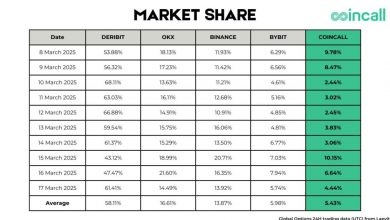Digitalization of Financial Services and Better User Experience

Key Insights on Digitalization in Financial Services
Digitization isn’t a choice anymore — if financial services want to stay ahead of competition, it is a must. Fintechs have changed how consumers do their finances, and the trend toward digital transformation has been expedited. With the rise of online banking and consumer demand for seamless and convenient experiences, banks have adopted field force mobility solutions to offer instantaneous service across platforms. Additionally, using tools like vcc for google ads has become a popular strategy to target digital-savvy consumers more effectively.
Fintech is revolutionizing the traditional bank model, allowing financial institutions to provide creative digital capabilities to meet the changing demands of customers. The possibilities are endless from mobile payments to automated investment platforms, etc. This change is not just about using new solutions; it’s about reinventing whole business models and how you interact with your customers.
The adoption of digitalization enables financial service firms to be relevant and competitive while enhancing customer satisfaction through tailor-made experiences. In this environment, if you wait to act you risk being left in the dust by consumers drawn to more nimble and tech-savvy competitors. Financial institutions need to either fully embrace this digital revolution or run the risk of becoming obsolete in an ever-evolving market.
User experience improvement has become a key differentiating factor for financial institutions as the industry transforms. Modern consumers demand not merely speed but a kind of convenience that fits their daily rounds like a glove. With this transition to digital platform, the focus was on innovation and making the user experience more efficient.
Today, to negate the monetary transaction into an effortless process should be the bare minimum requirement, with most customers looking for a smooth and quick interaction with their financial service provider. Gone are the days when they would put up with clunky processes; they expect access and ease at every step of the way. Digitalization brought user empowerment, giving you intuitive tools to perform everything from managing your account to tracking your investments.
With mobile banking apps and other online platforms, users can access their financial information at any time and almost anywhere. Such accessibility not only improves user experience but also instills trust and loyalty within customers who value control over their financial affairs. Digital transformation is no longer optional, it is a must-have for financial services to stay relevant in the current competitive marketplace.
Key Features of Digitized Financial Services that Improve User Experience
The advent of digitized financial services has drastically changed the way that people engage with financial products. Here are few that makes user experience even better:
User-Friendly Interfaces
- Designs that are streamlined and easy-to-use help users manage their finances with ease.
Instant Transactions
- Payments and transfers are processed in real-time, enabling users to manage their financial transactions without latency.
Improved Security
- It protects the user’s sensitive data with encryption & authentication protocols.
Tailored Services
- By leveraging AI-powered recommendations and custom-tailored offers, organizations can provide more contextually relevant experiences to each unique user.
Mobile Access & Convenience
- Users can access their accounts anytime, anywhere, whether they’re on their mobile app, desktop, or tablet.
Time-Saving
- Automated payments for bills, savings, and investment options save time and lower the risk of mistakes.
These tools bring convenience, safety and efficiency in the long run, contributing to better user experience in financial services.
Effective Use of Digital Solutions in Finance
Digital transformation has proved to be a game changer for few organizations who embraced and implemented digital at scale. Use cases from organizations across the board indicate that innovations from the fintech ecosystem are not trends; rather, they are critical strategies that are central to growing and improving operational efficiency.
One such case is XYZ Bank, which undertook a holistic digital transformation strategy. With the implementation of advanced analytics and machine learning into their operations, they were able to enhance customer service and drastically reduce processing time for loan applications. A success story of how Banks that come to terms with technology stand to gain through an improved user experience while driving efficiency into their own house.
ABC Fintech (anonymized database) is also a great example; they built an app that enables users to manage their finances on the go. This, coupled with an intuitive app interface and personalized features, drew in a younger demographic, resulting in a strong uptick in customer engagement and retention rates. This case illustrates the benefit of adapting with innovation in digital solutions that fit consumer needs.
These success stories in digital finance transformation share a common thread — technology embrace is making the difference between a bank merely surviving, or even thriving. The signs are unmistakable; fintech innovation is no longer an option; it is the need of an hour for all financial institutions to compete with the modern transactional landscape.
Challenges and Considerations during the Digitalization Journey
When firms start to get involved in the digitalization process, they have to go through an elaborate and tedious field of hurdles and points, which they cannot ignore. Security is one of the primary concerns. As companies become more dependent on digital platforms, there are cyber threats that can breach sensitive data. Asking (Pay)For IT Managers Cyber Security Help Cyber security is not a decision; It is half the price; It ensures the protection of the organization and clients from threats and ensures your organizational ethics by integrating a team of trained professionals who are up to date on consumer cyber attacks.
There are also big obstacles to this transition, in the form of regulatory compliance issues. Depending on the sector, companies should find whether a certain digital practice is against the industry regulations and standards. Organizations simply cannot afford to be out of the loop about laws that are applicable to their sector or processes – compliance failure can lead to significant penalties or a loss of reputation.
Another key consideration is customer resistance to change. Customers tend to be very wary of anything new that you are telling them to adopt in-line with your new technology or process fearing disruption or that they will get lost in the system and experience a less personal service. So it is important that businesses communicate effectively with their customers and highlight the benefits of digitalization, while educating them about the possible concerns.
For many organizations, integrating with legacy systems proves to be a daunting task. However, many existing infrastructures were not designed with these kinds of digital-centric tools in mind, and if such digital tools do not align themselves with an existing infrastructure, its operations could potentially be disrupted. These risks can be significantly reduced with a well-thought-out and phased approach.
With great opportunities for growth and efficiency, however, the journey towards digitalization also brings with it considerable challenges that require careful consideration and proactive management strategies. By confronting security concerns, regulatory compliance issues, customer resistance to change, and integration challenges directly, organizations can chart a path toward successful digital transformation.
Read more form tec





